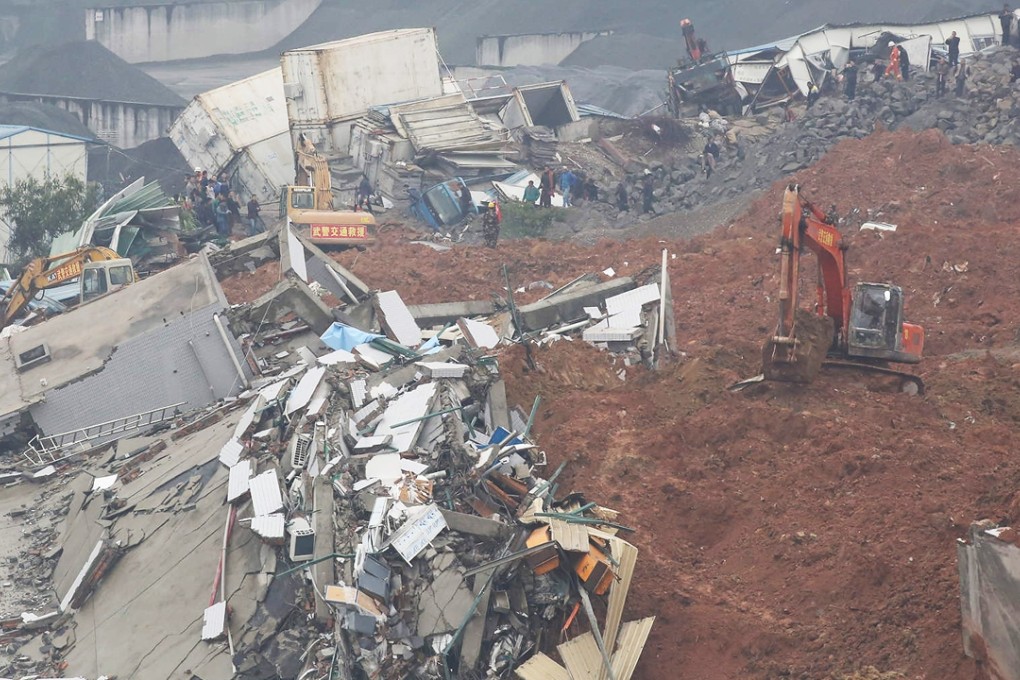Shenzhen landslide disaster shows urbanisation must go hand in hand with good governance
Latest man-made tragedy highlights the risks associated with the rapid growth of cities in mainland China

The full horror of the Shenzhen landslide disaster that destroyed or damaged more than 30 buildings in an industrial estate is still to emerge. Hope is ebbing fast for survivors among scores of people still unaccounted for after a man-made mountain collapsed. Our first thoughts must be with families who have lost loved ones, and with those who pray they may be found alive.
But it is not too soon to ask why a catastrophe plainly waiting to happen could not have been averted, and to reflect on the human cost of failure to turn around the mainland’s appalling industrial safety record. Already circumstances have come to light that need explaining. The dump, at an old quarry site, was ordered to close months ago and to take action to improve safety, but it continued to operate. The Ministry of Land and Natural Resources said the dump of earth and construction rubbish, as high as a 20-storey building, was too large and the slopes too steep, making it unstable. Nearby residents and workers told of a lack of a sense of urgency, if not official indifference, about concerns expressed over the past two years. Workers said increasing numbers of trucks had delivered construction rubbish and the dump had looked dangerous, especially during the rainy season, but their complaints had fallen on deaf ears.
Prompt calls by President Xi Jinping (習近平) and Premier Li Keqiang (李克強) for all-out rescue efforts are commendable. But, hopefully, they and other state leaders will reflect on the failure of local officials to enforce their own safety warnings. This is just one aspect of the cause of the landslide and who ought to bear responsibility should be the subject of open and transparent findings. It does not bode well, however, four months after twin explosions ripped through the Tianjin port area and killed more than 170 people, that while the authorities have investigated 11 officials for their role in that tragedy, the exact cause and who should be held responsible either have not been determined nor disclosed.
The disaster will be seen as an embarrassment to Shenzhen party chief Ma Xingrui, a top scientist whose appointment earlier this year marked him out as a rising political star. Ironically, it also came in the same week that a special urban works convention is being held in Beijing, parallel with the annual economic work conference, to seek a better approach to developing cities.
If there is a lesson for cadres in the Shenzhen disaster, it is that urbanisation needs the software of proper governance as well as the hardware of infrastructure.
